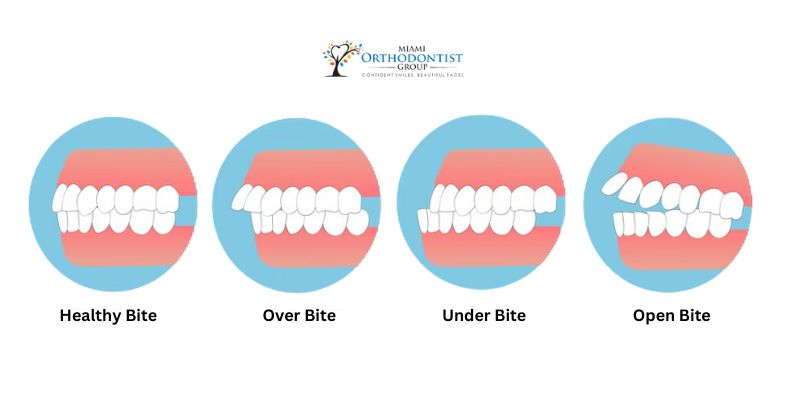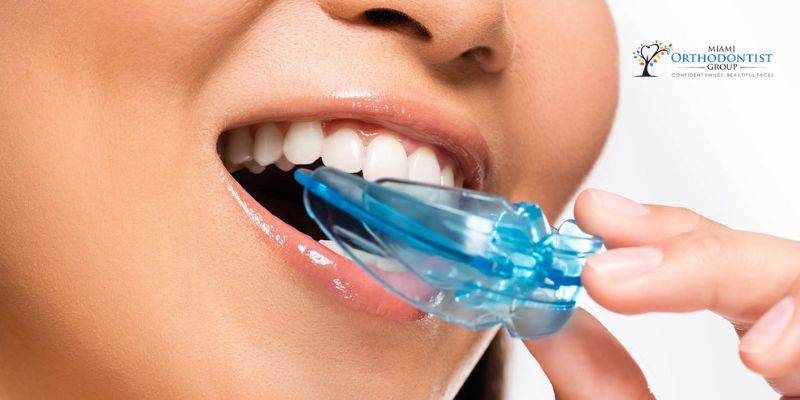Maintaining optimal oral health goes beyond regular brushing and flossing. Dental appliances play a crucial role in supporting and enhancing oral hygiene, contributing significantly to the overall well-being of an individual. These specialized devices are designed to address various dental issues, from alignment problems to teeth grinding, and they offer a range of benefits beyond just a radiant smile.
Dental Appliances: Importance for Oral Health
1. Orthodontic Appliances for Alignment and Bite Correction
 Orthodontic appliances like braces and aligners address misalignments and bite issues. Crooked teeth or malocclusions not only impact the aesthetics of a smile but also pose potential risks to oral health. Teeth that are not properly aligned can be challenging to clean, leading to a higher risk of cavities and gum disease. Moreover, bite irregularities can result in uneven wear on the teeth, causing long-term damage.
Orthodontic appliances like braces and aligners address misalignments and bite issues. Crooked teeth or malocclusions not only impact the aesthetics of a smile but also pose potential risks to oral health. Teeth that are not properly aligned can be challenging to clean, leading to a higher risk of cavities and gum disease. Moreover, bite irregularities can result in uneven wear on the teeth, causing long-term damage.
Orthodontic appliances apply gentle pressure to shift teeth into their correct positions gradually. This not only enhances the appearance of the smile but also promotes better oral hygiene. Straighter teeth are easier to clean, reducing the accumulation of plaque and bacteria. Additionally, a well-aligned bite ensures even distribution of chewing forces, preventing excessive wear on specific teeth and reducing the likelihood of jaw pain or temporomandibular joint (TMJ) disorders.
2. Mouthguards for Teeth Grinding and Sports Activities
 Teeth grinding, or bruxism can lead to dental issues, including worn-down enamel, jaw pain, and headaches. Dental appliances like custom-fit mouthguards offer an effective solution to protect teeth from the damaging effects of grinding or clenching. These devices create a barrier between the upper and lower teeth, absorbing the impact of grinding forces and preventing enamel erosion.
Teeth grinding, or bruxism can lead to dental issues, including worn-down enamel, jaw pain, and headaches. Dental appliances like custom-fit mouthguards offer an effective solution to protect teeth from the damaging effects of grinding or clenching. These devices create a barrier between the upper and lower teeth, absorbing the impact of grinding forces and preventing enamel erosion.
In addition to addressing bruxism, mouthguards play a vital role in safeguarding the teeth during sports activities. The impact of a blow to the face during sports can result in chipped or knocked-out teeth. Mouthguards act as a cushion, absorbing the force and minimizing the risk of dental injuries. Whether for nighttime bruxism or athletic endeavors, these dental appliances provide a proactive approach to maintaining oral health and preventing long-term damage.
3. Retainers for Long-Term Stability After Orthodontic Treatment
After the successful completion of orthodontic treatment with braces or aligners, the role of dental appliances continues with the use of retainers. Retainers are crucial in maintaining the results achieved during orthodontic work. Teeth naturally tend to shift back to their original positions; without proper retention, there is a risk of relapse.
Retainers help preserve the alignment achieved during orthodontic treatment by preventing the teeth from reverting to their previous positions. Typically worn at night, retainers provide the necessary support to keep the teeth in their newly aligned state. This ensures the longevity of the orthodontic investment, promoting a stable and aesthetically pleasing smile over the long term.
4. Sleep Apnea Appliances for Respiratory Health
Beyond addressing dental concerns, certain appliances are pivotal in promoting overall health, particularly in cases of sleep apnea. Sleep apnea is a condition characterized by interruptions in breathing during sleep, often caused by the collapse of the airway. Oral appliances, such as mandibular advancement devices, can be prescribed to individuals with mild to moderate sleep apnea.
These appliances work by repositioning the jaw and tongue to keep the airway open during sleep, facilitating uninterrupted breathing. By improving respiratory function, these devices not only contribute to better sleep quality but also have positive effects on overall health. Treating sleep apnea with oral appliances reduces the risks associated with untreated sleep disorders, such as cardiovascular issues and daytime fatigue.
5. Prosthodontic Appliances for Tooth Replacement
In cases where tooth loss occurs due to decay, trauma, or other dental issues, prosthodontic appliances come into play to restore both function and aesthetics. Dental prosthetics replace missing teeth, such as dentures, bridges, and implants. Beyond the apparent benefits of restoring a complete smile, these appliances contribute to maintaining oral health in various ways.
Dental prosthetics help preserve the natural alignment of surrounding teeth by preventing them from shifting into the gaps left by missing teeth. This prevents potential issues such as bite irregularities and difficulty chewing. Moreover, a complete set of teeth supports proper speech and pronunciation, enhancing communication.
6. Preventive Appliances for Early Intervention
Preventive dental appliances, such as space maintainers for children, are vital in early intervention to avoid potential issues as teeth develop. Space maintainers are used when a child loses a baby tooth prematurely, preventing adjacent teeth from shifting into the space. By preserving the proper alignment of teeth, space maintainers contribute to a healthy eruption pattern for permanent teeth, minimizing the need for orthodontic intervention later in life.
Additionally, dental sealants can be considered a preventive appliance. These thin coatings are applied to the chewing surfaces of molars to create a protective barrier against decay. Sealants act as a shield, preventing bacteria and food particles from settling into the grooves and fissures of the teeth, reducing the risk of cavities.
7. Occlusal Splints for Temporomandibular Joint (TMJ) Disorders
Temporomandibular joint disorders can cause discomfort, pain, and restricted jaw movement. Occlusal splints, known as bite guards or night guards, are commonly prescribed appliances to alleviate symptoms associated with TMJ disorders. These custom-fitted devices are worn over the teeth, creating a barrier between the upper and lower jaws.
Occlusal splints serve multiple purposes in managing TMJ disorders. They help prevent teeth grinding and clenching, common contributors to TMJ issues. By minimizing the forces exerted on the jaw joint, these appliances relieve the pain and discomfort associated with TMJ disorders. Additionally, occlusal splints promote proper jaw alignment, reducing muscle and joint strain and facilitating a more comfortable and natural jaw movement.
Conclusion
Incorporating these dental appliances into oral health maintenance routines demonstrates a proactive approach to addressing specific issues and preventing potential complications. Regular consultations with a dentist ensure the proper selection, fitting, and usage of these appliances tailored to individual needs, fostering optimal oral health throughout life. From managing TMJ disorders to strengthening enamel, these appliances contribute to a comprehensive strategy for maintaining a healthy and functional smile.


